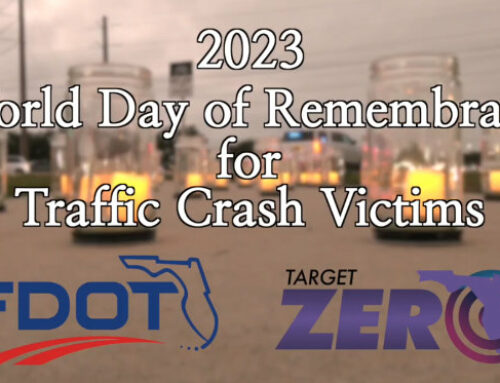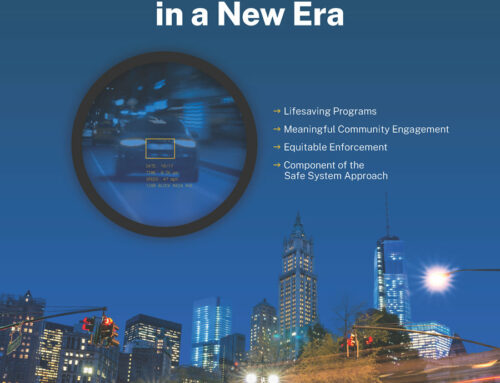This article first appeared in Wesh Orlando News on April 11, 2024 – click here
Florida cities and counties that have red light camera programs insist they are saving lives and reducing serious injuries.
Proving that idea is complicated, according to WESH 2 Investigates’ review of available data.
Certainly, no one argues that red light running can be deadly. Each year in the U.S., there are roughly 165,000 crashes, 1,000 deaths, and 127,000 injuries. The red light camera program in the state, launched in July 2010, was intended to reduce those numbers.
Some drivers fight the $158 “Notices Of Violation” in court. WESH 2 Investigates observed a day of court hearings in Orange County court, where most drivers ended up paying the fines.
Evelyn Mack claimed family members borrowed her car and ran red lights, getting notices of violation. She didn’t bring a required affidavit swearing to that assertion to court and ended up paying the fines.
“Well to me, it’s just about money,” Mack said afterward.
Melissa Wandall vehemently disagrees.
Her husband Mark was killed in a crash caused by a red light runner on Oct. 24, 2003, in Bradenton — just two weeks before their daughter Madisyn was born.
“The devastating piece of it is that my daughter never got to meet my husband, he never got to physically hold her,” she said.
Wandall fought for six years and persuaded lawmakers to pass Florida’s red light camera law, the Mark Wandall Traffic Safety Act, in 2010.
“If this bill was not working, I would strip my husband’s name off of this bill in a second,” Wandall said.
WESH 2 Investigates has been reviewing the Florida Department of Highway Safety and Motor Vehicles (FLHSMV) red light running reports. For the three most common types of collisions — rear end, right angle and side swipe — reports say crashes are up at intersections with red light cameras today, compared to the number of collisions before cameras were installed at those intersections.
Statewide, crashes at intersections where cameras were installed were up 3% last year, and up 11% in 2022.
In Orlando, crashes were up 12% last year, and up 9% the year before. Orange County saw a 15% increase last year, and a 9% jump in 2022.
But as Orlando and Orange County red light camera program managers tell WESH 2, the state reports don’t tell the whole story.
“Yes, there is a reduction in serious crashes,” Jerald Marks, Orange County traffic engineering project manager, said.
Ray Rodriguez, operations manager for the “Orlando Stops” red light camera program said, “Some of these crashes have nothing to do with the signal.”
Both of them and the managers of city and county red light camera programs argue that the reason it appears there are more crashes at intersections is because the state is not just counting crashes that happen at or near intersection corners. The state reports include collisions that happen more than 80 yards from intersections.
A FLHSMV spokesperson told WESH 2 Investigates that the department uses “the FDOT definition of intersection… 250 feet from the centerline of the intersection.”
But local red light program managers tell us, they analyze crashes no farther than 100 feet from intersections, to determine if the cameras are helping to reduce crashes.
They also blame distracted driving for causing most rear-end collisions, not people slamming on brakes to avoid red light camera tickets when they see the “photo enforced” signs or cameras along the curbs.
While neither Orlando nor Orange County provided their own data to support their assertions of safety, the state reports do show “fatal” and “injury” crashes at red light camera intersections are down.
“I mean, of course, we want to reduce all types of crashes, and that’s the goal. The fact that fatalities went down, total physical injuries went down, it’s a big deal,” Rodriguez said.
“We’re adding much more volume to our roads but we see the accident rates decreasing at the same time, so I consider that a win,” Marks said.
WESH 2 Investigates’ review of the state reports also reveals the Department of Highway Safety has, for five straight years, recommended to Republican Florida Gov. Ron DeSantis “more accurate reporting” on the red light camera program including an “analysis conducted by an independent organization.”
With her husband’s name on the red light camera law, Wandall is demanding it.
“We need to get better reporting because we need to stand behind these cities and counties and say enough is enough. You’re doing what you’re supposed to do. The cameras are doing what they’re supposed to do. Let’s get the correct reporting down,” Wandall said.
WESH 2 Investigates has reached out to the governor’s office several times in recent weeks to find out why an “independent analysis” of red light cameras and their effect on crashes has not been carried out.
We’ll update our report if and when we hear back.






